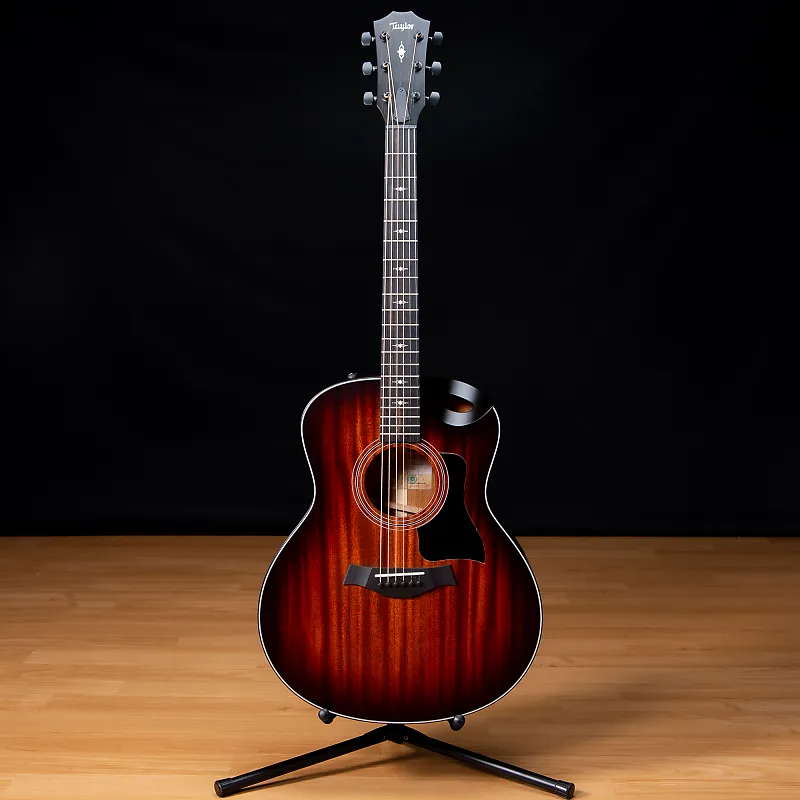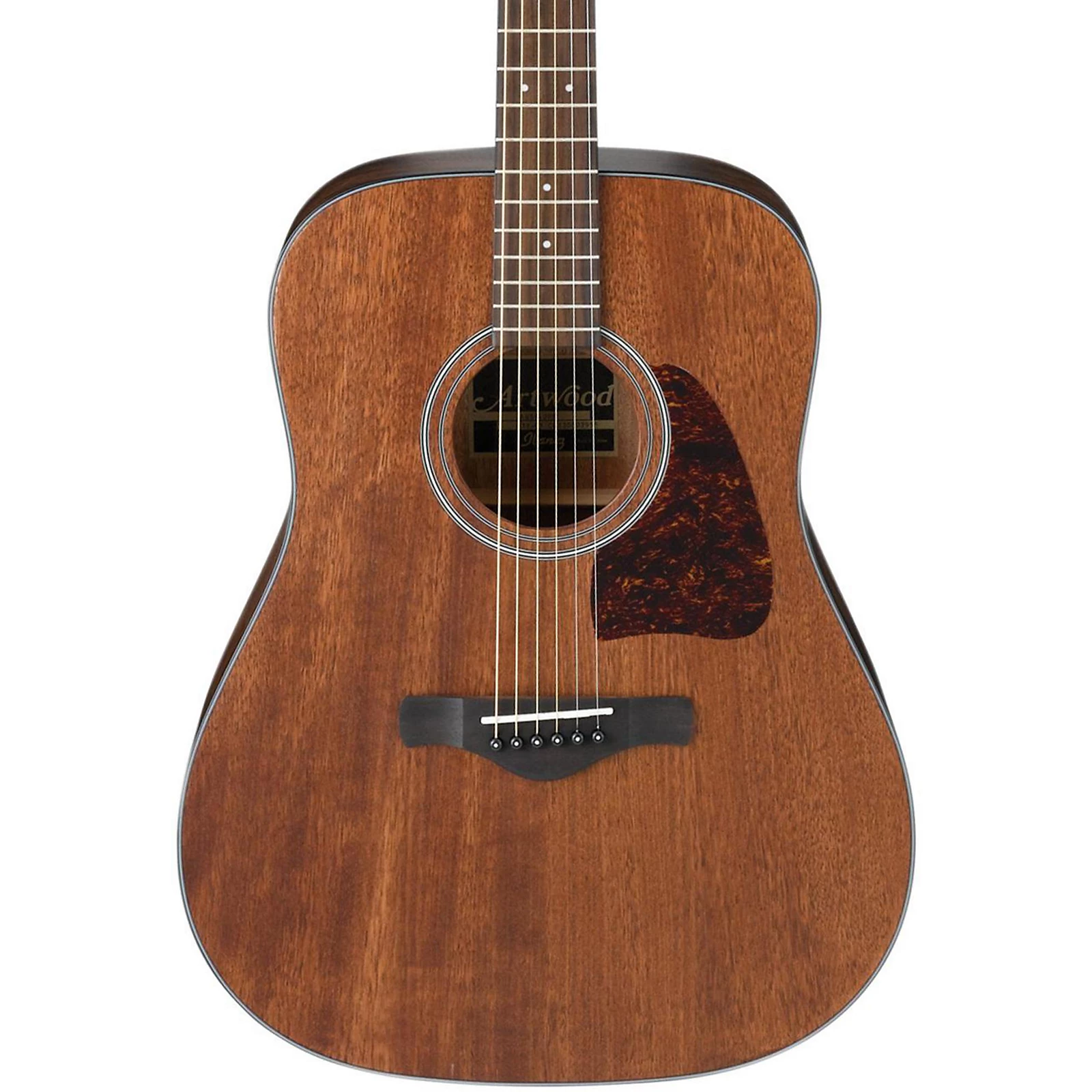A solid top guitar refers to a type of acoustic guitar where the top, or soundboard, is made from a single piece of wood. This differs from laminate or plywood tops, which are made by layering thin sheets of wood together.
The benefit of a solid top guitar is that it produces a richer and more resonant sound compared to laminate tops. This is because the vibrations created by plucking the strings are able to travel through the entire piece of solid wood, resulting in a fuller and warmer tone.
Solid top guitars are often preferred by professional musicians and serious hobbyists for their superior sound quality. However, they also tend to be more expensive due to the use of high-quality materials and skilled craftsmanship required for their construction.
For beginners looking to purchase their first acoustic guitar, it may not be necessary to invest in a solid top right away. There are many budget-friendly options with laminate tops that still produce decent sound for practicing and learning purposes.
However, as one’s skills progress and they develop a deeper appreciation for music quality, upgrading to a solid top guitar can greatly enhance their playing experience. It is important for beginners to try out different types of guitars before making a decision and choosing what feels most comfortable for them personally.
Understanding the Basic Structure of a Solid Top Guitar
When you pick up a solid top guitar, you’re holding more than just an instrument; it’s a blend of craftsmanship and natural materials. A solid top, made from a single piece of wood, resonates with vibrant clarity. This is different from plywood tops that use multiple layers glued together. The wood chosen for the top often comes from spruce or cedar trees because they are excellent at enhancing sound quality while remaining light. Each strum brings out rich tones thanks to this carefully selected timber.
The body shape also plays a crucial role in how the guitar sounds and feels when played. You have various shapes such as dreadnought, concert, and jumbo—all crafted to serve different musical needs:
- Dreadnought: offers deep bass and loud volume
- Concert: provides balanced tones suitable for fingerpicking
- Jumbo: delivers powerful sound ideal for strumming
Guitar builders pay close attention to bracing patterns inside the body too––those unseen wooden strips create specific resonances.
The neck, usually attached with strong joins like dovetail or bolt-on necks, ensures playability across frets without sacrificing stability. By understanding these elements—the solid wood top’s material choice combined with thoughtful design—you can better appreciate why each guitar sings its own unique song.
How Does a Solid Top Guitar Influence Sound Quality?
When you strum a guitar, you’re not just hearing string vibrations but also the resonance of the entire instrument. A solid top guitar, made from a single piece of wood like spruce or cedar, can dramatically enhance sound quality. The wood’s inherent flexibility allows it to vibrate more freely than laminate tops. As a result, the tones are richer and the sustain is longer. It’s like comparing a finely aged wine to one fresh out of the barrel; there’s depth and complexity in every note.
Solid tops aren’t only about richness; they also improve over time. As you play, the wood gradually opens up, making your tunes even more vibrant and resonant with age — most guitars take years to achieve their peak tone. With each pluck or strum, you’re investing in future harmonics that will be fuller and more intricate. This natural evolution adds another layer of magic that laminate-topped guitars can’t replicate.
- Lush Midrange: Solid tops offer clearer midrange frequencies.
- Dynamics: They respond better to subtle changes in playing style.
Ultimately, choosing a solid top guitar isn’t just an investment in an instrument but an investment in sound itself. It’s about crafting music that’s rich with layers and emotion for years to come.
Read also: Can you plug in a Yamaha TransAcoustic guitar
Benefits and Drawbacks of Owning a Solid Top Guitar
Owning a solid top guitar can be quite an investment, both financially and musically. The benefits are often numerous and rewarding. For one, the sound quality of these guitars is simply unmatched. Solid tops usually consist of high-quality wood that resonates beautifully when played, producing rich and vibrant tones that improve as the instrument ages. This means your guitar’s sound will only get better with time, offering you an evolving musical experience.
However, there are also some drawbacks to consider before making such a purchase. One significant downside is the cost—solid top guitars tend to be more expensive than their laminate counterparts due to the premium materials used in construction. Additionally, they require more maintenance; changes in humidity and temperature can cause warping or cracking if not properly cared for. So it’s crucial to store them correctly and perhaps invest in a humidifier.
- Superb sound quality
- Aging improves tone
- Higher initial cost
- Sensitivity to environment
Navigating these pros and cons can help you make an informed decision about whether owning a solid top guitar aligns with your needs as a musician.

Choosing Between a Laminate or Solid Top Guitar: Your Ultimate Guide
When it comes to picking a guitar, one major decision you’ll need to make is whether to go for a laminate top or a solid top. Let’s start with the laminate tops. These guitars have layers of wood pressed together, making them incredibly durable and less prone to cracking or warping. If you live in an area with extreme weather changes, laminate might be your best bet because it’s more resilient. Plus, they’re usually lighter on your wallet without sacrificing too much sound quality.
On the other hand, solid tops are where you really get into some serious sound territory. Imagine playing a chord and hearing it resonate deeply—almost like the guitar is speaking back to you! Solid tops are made from single pieces of wood that vibrate freely, providing richer tones and better projection over time. Yes, they can be pricier and require more care (like proper humidity control), but many players find that extra effort worthwhile for the superior sound quality.
Here’s how it breaks down:
- Laminates: Durability | Budget-friendly | Consistent performance.
- Solids: Superior tone | Better resonance | Requires maintenance.
So when you’re standing in that music store strumming away trying to decide between these two options, consider what matters most: durability and cost or rich tonal quality? Both choices have their merits; it all depends on what kind of musical journey you’re planning!
You may also like: Does a cracked soundboard ruin a piano
Deciding If A Solid Top Guitar Is Right For You
Choosing a solid top guitar can be an exciting and significant decision for any musician. These guitars feature a single piece of wood for the soundboard, which often results in richer, more resonant tones. When you play one, it’s easy to notice how every strum produces unparalleled clarity and warmth. Over time, the wood matures and that initial tone only gets better, making each note sing with added character. Yet, this journey may not suit everyone due to higher costs compared to laminate options.
Think about your priorities: Are you seeking an instrument that will grow with you over years? Or do you need something immediately functional without breaking the bank? A solid top requires careful maintenance—humidity control is crucial—to prevent cracks or warping. However, if you’re willing to invest both financially and emotionally into caring for it properly, you’ll find the payoff rewarding.
Some questions might help guide your choice:
- What type of music do you primarily play?
- Is portability important given where you’ll use it most?
Ultimately deciding on a solid top hinges on balancing short-term needs against long-term aspirations. If those rich sounds align perfectly with what inspires your practice sessions or performances now—and down the line—a solid top guitar could indeed be right for you.

